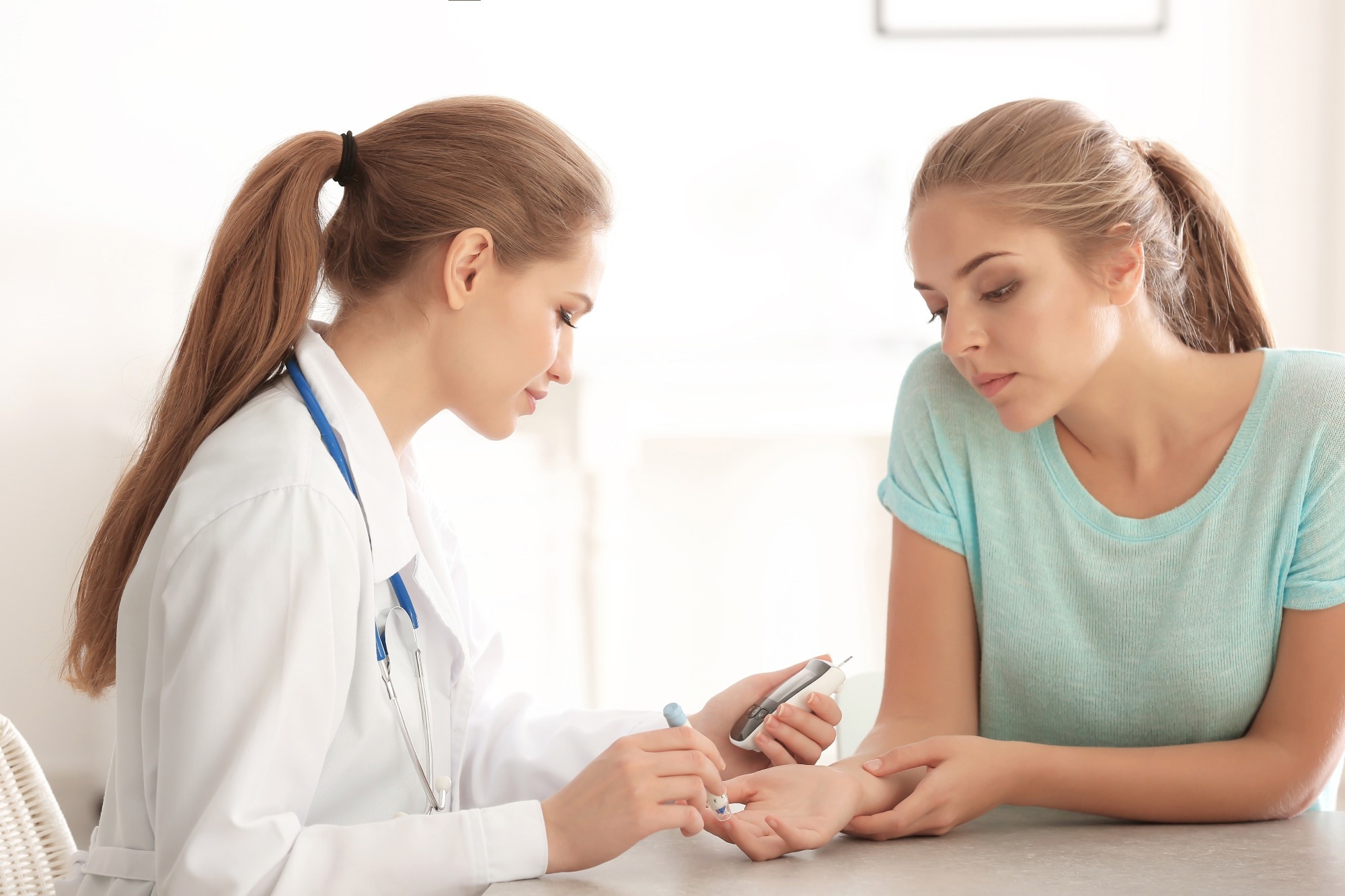In a recent article published in the British Journal of Cancer, researchers evaluated the relationship between diabetes and its two main types, type 1 (T1D) and type 2 (T2D), and the risk of breast cancer.
 Study: Diabetes mellitus and risk of breast cancer: a large-scale, prospective, population-based study. Image Credit: AfricaStudio/Shutterstock.com
Study: Diabetes mellitus and risk of breast cancer: a large-scale, prospective, population-based study. Image Credit: AfricaStudio/Shutterstock.com
Background
Diabetes is a global epidemic that mainly affects women, with T2D being the most common type, characterized by diminished insulin sensitivity and decreased insulin release.
T1D, conversely, is marked by the autoimmune death of insulin-secreting beta cells in the pancreas, resulting in inadequate insulin production.
Diabetes-related metabolic abnormalities, hormonal precursors, and therapies may influence the chances of developing breast cancer, the most common cancer among women. Hyperinsulinemia and insulin resistance are less common in T1D, although the reasons behind this connection are unclear.
Previous research either focused solely on type 2 diabetes patients or did not distinguish between diabetes types, resulting in diverse population data that did not account for confounders.
About the study
In the present large-scale, prospective, population-based study, researchers investigated whether individuals with diabetes, type 1 or 2, were at an increased risk of breast cancer.
The study included women aged between 40 and 69 during recruitment from 2006 to 2010 from the United Kingdom (UK) Biobank group. Multivariate Cox proportional hazards modeling was performed to determine the adjusted hazard ratios (aHRs) or associations of diabetes and its types, T1D and T2D, with new-onset breast cancer.
The covariates adjusted for included age, race, physical activity, body mass index (BMI), smoking habits, and the Townsend Deprivation Index (TDI).
The team excluded 229,255 male individuals; 1,262 individuals who self-documented malignancy without associated registry records or those who had tumors of unknown or uncertain behavior; 15,348 individuals who had cancer history or were diagnosed with malignancies without the date of diagnosis; and 6,469 individuals who underwent mastectomy before study initiation or did not have the operation date data.
As a result, the sample size comprised 250,312 females. The tenth version of the International Classification of Diseases (ICD-10) codes, or self-documented data from baseline interviews and validated questionnaires, were analyzed to identify new-onset and prevalent diabetes.
Prevalent diabetes cases included those with the disease diagnosed before study initiation, whereas incident diabetes cases included individuals diagnosed at follow-up.
The self-documented history of taking antidiabetic medications among T2D patients was analyzed as a secondary analysis. The primary study outcome was the first breast cancer diagnosis, and incident cases were identified from data linked with the nationwide cancer registries.
Sera were obtained from the participants to assess the levels of testosterone, insulin-like growth factor-1 (IGF-1), sex hormone binding globulin (SHBG), C-reactive protein (CRP), and glycated hemoglobin (HbA1c).
Follow-up information was obtained until 30 June 2018, 31 January 2019, and 30 June 2020 for Scotland, Wales, and England, respectively, representing the time points of the final breast cancer diagnosis.
Results
The study included 575 T1D patients, 7,891 T2D patients, 6,821 females who developed type 2 diabetes over 11 years (median) of follow-up, and 235,025 females who did not develop diabetes during the study period.
In total, 8,182 breast cancer cases were detected at follow-up, including 7,745 instances among non-diabetic women and 383 among people with diabetes. Breast cancer risk was highest during the initial five years following a diagnosis of type 2 diabetes (aHR, 3.9).
With the increase in time, greater than five years after type 2 diabetes diagnosis, breast cancer risk showed a consistent decline. The relationship between type 2 diabetes and the risk of breast malignancy reversed in direction after 10.0 years of the diagnosis of T2D (aHR, 0.7). It showed robust inverse associations among individuals who received T2D diagnosis >15.0 years before breast malignancy was diagnosed (aHR, 0.4).
In comparison to non-diabetic individuals, women with diabetes showed an increased likelihood of being non-White, having a higher TDI, and having no history of oral contraceptive use.
T1D patients had a lower likelihood of having undergone mammography, having children, and being post-menopausal at study initiation. T1D patients demonstrated the highest levels of HbA1c and SHBG, while T2D patients had low SHBG and elevated CRP levels.
On the whole, there was no significant relationship between diabetes and the risk of breast cancer (aHR, 1.0). Stratifying by diabetes type, T1D patients had a higher risk of breast cancer than non-diabetic individuals (aHR, 1.5).
T2D was not associated with the overall risk of breast cancer (aHR 1.0). However, there was a significant elevation in the risk within a short period after the T2D diagnosis.
T1D was associated with an increased risk of breast cancer among women ≥60 years of age (aHR, 2.4), who had undergone mammography (aHR, 1.6), who took hormone replacement therapy medications (aHR, 3.0), post-menopausal women (aHR, 1.7), and who had children (aHR, 1.7).
The sensitivity analyses, performed by analyzing only new-onset diabetes cases, redefining both diabetes types, and excluding breast cancer cases occurring within 12 months of diabetes identification and diabetes interactions with BMI, yielded similar findings.
Conclusion
Overall, the study findings showed no link between diabetes and the risk of breast cancer; however, an elevated risk of breast cancer was noted shortly after type 2 diabetes was diagnosed.
Additionally, the findings indicated that T1D patients might be at an increased risk of breast cancer.